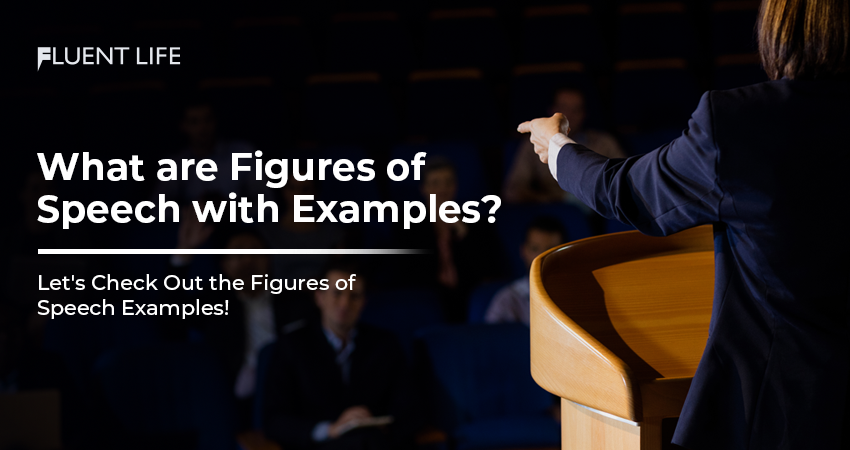Figures of speech play a crucial role in communication and literature, bringing various benefits and importance to language. Let’s check out the details from this article including figures of speech examples.
Also Read: How to Learn English Speaking Easily Step By Step? Let’s Check Out the Tips on Speaking English!
What are Figures of Speech?
Figures of speech are rhetorical devices that add depth, vividness, and creativity to language. Writers and speakers employ these techniques to engage their audience, evoke emotions, and convey complex ideas in a memorable way. In this article, we’ll explore some common figures of speech along with examples to understand their significance and impact on communication.
Simile:
A simile is a comparison between two different things using “like” or “as.” It helps readers visualize the subject more effectively.
Example: Her smile was as radiant as the sun.
Metaphor:
A metaphor also compares two different things, but without using “like” or “as.” It creates a direct association between the two, often used to add depth to descriptions.
Example: His voice was music to her ears.
Personification:
Personification gives human attributes to non-human entities, making them relatable and lively.
Example: The wind whispered through the trees.
Hyperbole:
Hyperbole involves exaggerating a statement for emphasis or effect.
Example: I’ve told you a million times!
Alliteration:
Alliteration is the repetition of the same initial consonant sound in a series of words, phrases, or lines, which creates a rhythmic and memorable effect.
Example: Peter Piper picked a peck of pickled peppers.
Onomatopoeia:
Onomatopoeia uses words that phonetically imitate the natural sound they represent.
Example: The thunder roared in the distance.
Oxymoron:
An oxymoron combines contradictory or opposite terms for a heightened effect.
Example: Bitter sweet, deafening silence.
Pun:
A pun exploits the multiple meanings of a word or uses words with similar sounds but different meanings for humor or wordplay.
Example: Time flies like an arrow; fruit flies like a banana.
Irony:
Irony is the expression of a meaning that is opposite to the literal or intended meaning, often for a humorous or critical effect.
Example: The fire station burned down.
Euphemism:
Euphemism uses mild or indirect words to replace harsh or unpleasant ones.
Example: Passed away instead of died.
Also Read: The Impact of Teachers’ Communication Skills on Teaching
Significance of Figures of Speech
Here are some reasons why figures of speech are significant:
# Enhancing Expression: Figures of speech add depth, richness, and creativity to language, making communication more engaging and captivating. They help convey complex ideas in a concise and memorable manner, making it easier for the audience to understand and retain the message.
# Creating Imagery: Figures of speech paint vivid mental images by using comparisons, personifications, and other rhetorical devices. They allow writers and speakers to evoke emotions, stimulate the senses, and transport the audience to different worlds or experiences.
# Aiding Memorability: The use of literary devices like alliteration, rhyme, and repetition helps in making phrases and lines more memorable. This enhances the impact of the message, making it stick in the minds of the audience.
# Emphasizing Key Points: Figures of speech can be used to emphasize important concepts or ideas in a text or speech. By using techniques like hyperbole or repetition, writers can draw attention to critical points and leave a lasting impression on the audience.
# Evoking Emotions: Figures of speech have the power to evoke emotions and create emotional connections with the audience. Metaphors, similes, and personifications allow readers or listeners to relate to the subject matter on a deeper level, fostering empathy and understanding.
# Adding Style and Flair: Employing figures of speech showcases the writer’s or speaker’s linguistic prowess and creativity. It adds a sense of style and flair to their work, making it more enjoyable and impressive for the audience.
# Engaging the Audience: Using figures of speech in speeches, presentations, or storytelling captivates the audience’s attention. It prevents monotony and keeps the listeners actively involved, enhancing the overall effectiveness of communication.
# Encouraging Critical Thinking: Figures of speech often require the audience to think beyond the literal meanings of words. This encourages critical thinking and analysis, as listeners or readers try to understand the underlying messages or symbolism.
# Fostering Cultural Understanding: Figures of speech are prevalent in different cultures and languages, often reflecting the values, beliefs, and experiences of a society. Exploring these literary devices can deepen one’s understanding of cultural nuances and historical context.
# Promoting Artistic Expression: Figures of speech are an integral part of poetry, literature, and creative writing. They offer writers and poets a platform for artistic expression, allowing them to craft unique and memorable works.
Figures of speech serve as powerful tools in language and communication, enriching expressions, evoking emotions, and leaving a lasting impact on the audience. By using these rhetorical devices effectively, writers and speakers can elevate their work and foster a stronger connection with their readers or listeners.
Also Read: How to Speak Flowing English and Tips for Words With Invisible Syllables
Conclusion
Figures of speech are powerful tools that enrich language and communication. Writers and speakers use these techniques to create imagery, evoke emotions, and captivate audiences. By understanding and employing various figures of speech, one can elevate their writing and speaking skills to connect with their audience on a deeper level. So, go ahead and experiment with these literary devices to add color and flair to your expressions. You should visit the Fluent Life website to grab more details and information.






